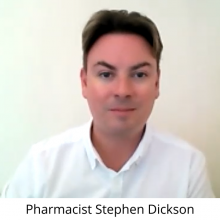Low Dose Naltrexone (LDN) and Vivid Dreams
Could vivid dreams be considered part of the healing process of the consciousness that accompanies the physical shifts?
So this is interesting that I’ve got this one because we have a very different perspective in the UK of vivid dreams versus the US, I think. For people in the group very early on when we started treating people with LDN we discovered that the vivid dreams were a very significant side effect, and in MS patients we tended to really suggest starting taking Low Dose Naltrexone (LDN) in the morning and not really looking at evening dosing unless they weren't getting good result. So generally as a kind of measure of safety almost everywhere, in that we deal with starts in the morning and would only really go to the evening if they weren't getting a good result with LDN. So like it's one of those ones where I can understand the concept of the theoretical concept but I think we saw it more as a side effect rather than a healing process. But maybe Michelle, you were talking about that earlier on. Isn't it that's an important part?
Michelle: Yeah, and I was just reflecting on some of the previous LDN Research Trust seminars and conferences where providers have added their information and again, it's kind of like once a day dosing, twice a day dosing, we see a wide variety of opinions in different camps, and how it works. So it goes back to treating that individual and really coming up with what's best for that individual because like you say, a lot of times if the vivid dreams are impacting their overall health, then there's no sense in keeping it at a bedtime dose. That doesn't make any sense at all. So moving it to the morning can be just as beneficial, and I think both Dr Chopra talked about that even for pain control, and Dr Weinstock certainly talked about that as well for GI issues.








